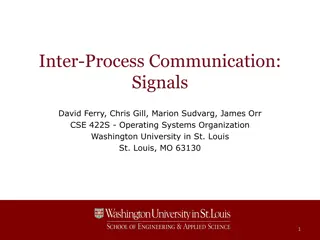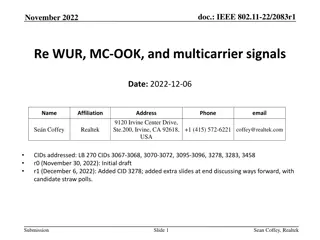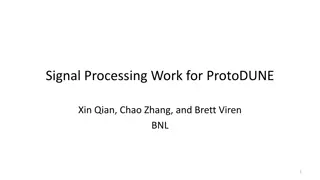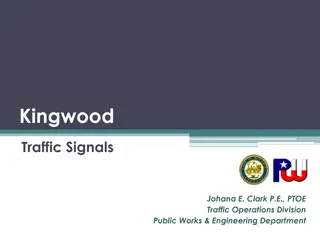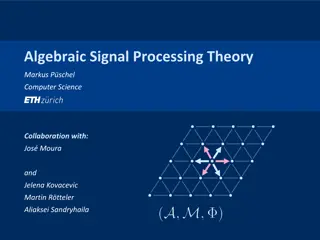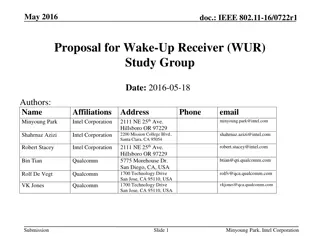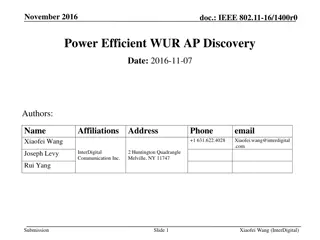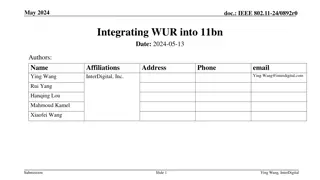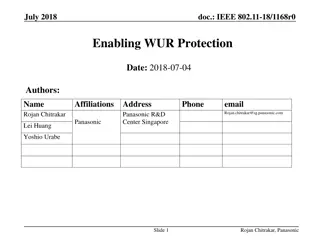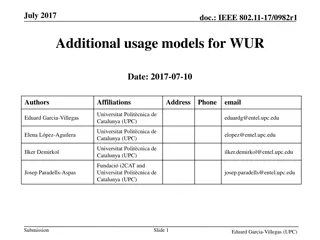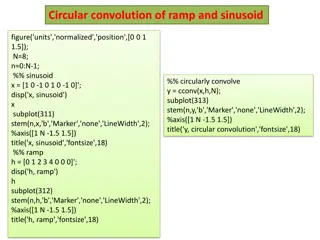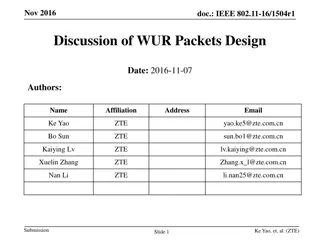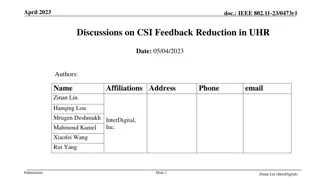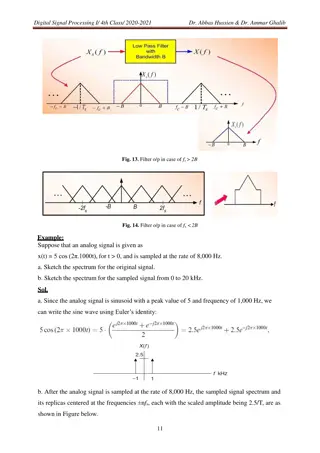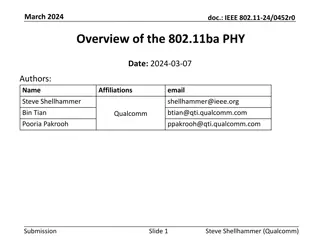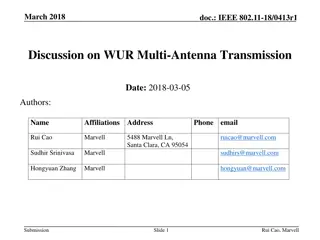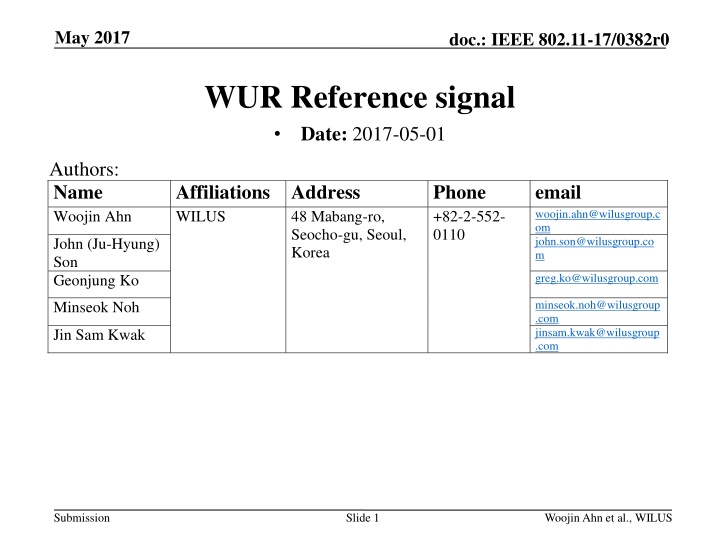
Applications of WUR Beacon in IEEE 802.11 Networks
Discussing the applications of WUR beacon frames in IEEE 802.11 networks, focusing on different usage models and scenarios where the beacon frames play a crucial role in ensuring connectivity and context awareness between APs and STAs. The study considers various network environments, such as mobile and power-saving APs, to explore effective applications of WUR beacons in different circumstances.
Download Presentation

Please find below an Image/Link to download the presentation.
The content on the website is provided AS IS for your information and personal use only. It may not be sold, licensed, or shared on other websites without obtaining consent from the author. If you encounter any issues during the download, it is possible that the publisher has removed the file from their server.
You are allowed to download the files provided on this website for personal or commercial use, subject to the condition that they are used lawfully. All files are the property of their respective owners.
The content on the website is provided AS IS for your information and personal use only. It may not be sold, licensed, or shared on other websites without obtaining consent from the author.
E N D
Presentation Transcript
May 2017 doc.: IEEE 802.11-17/0382r0 WUR Reference signal Date: 2017-05-01 Authors: Name Woojin Ahn Affiliations Address WILUS Phone +82-2-552- 0110 email woojin.ahn@wilusgroup.c om john.son@wilusgroup.co m 48 Mabang-ro, Seocho-gu, Seoul, Korea John (Ju-Hyung) Son Geonjung Ko greg.ko@wilusgroup.com minseok.noh@wilusgroup .com jinsam.kwak@wilusgroup .com Minseok Noh Jin Sam Kwak Submission Slide 1 Woojin Ahn et al., WILUS
May 2017 doc.: IEEE 802.11-17/0382r0 Abstract Discussing applications of WUR beacon frame in different 11ba usage models Considering possible behaviors of WUR STAs when no WUR beacon frame is received Proposing that AP indicates its context (e.g., mobility, power-saving) to the associated STAs Submission Slide 2 Woojin Ahn et al., WILUS
May 2017 doc.: IEEE 802.11-17/0382r0 WUR Beacon 11ba has defined WUR beacon frame[1] Transmitted by WUR AP Verifying connectivity Delivering some management info. E.g., time synchronization function Other purpose TBD Submission Slide 3 Woojin Ahn et al., WILUS
May 2017 doc.: IEEE 802.11-17/0382r0 Beacon frame in existing 802.11 networks Main purposes of beacon frame Announcing the presence of a WLAN Providing all the essential BSS information AP consistently broadcasts beacon frame as long as the BSS exists Usage models of existing 802.11 standards mostly considers infrastructure BSS Consisting of Fixed AP and user equipped STAs with little mobility Upon a lack of beacon frame from the associated AP, a STA might invoke the scanning procedure Submission Slide 4 Woojin Ahn et al., WILUS
May 2017 doc.: IEEE 802.11-17/0382r0 WUR beacon in WUR network In case of WUR networks, the applications of WUR beacon might be different from the existing 802.11 networks[2] Considering the variety of network environments Mobile and/or power-saving APs (cattle farm, wearable, wake-up home AP) Service region may move Serving temporarily IoT, wearable STAs Power saving than performance Query-based data transfer In some models, BSS membership might be weak or not be present Moving goods tracking, ITS We need to examine effective applications of WUR beacon Considering various usage models of 11ba with different circumstances Submission Slide 5 Woojin Ahn et al., WILUS
May 2017 doc.: IEEE 802.11-17/0382r0 Observation (1) smart home (UM1) A smartphone is connected to a fixed AP The smartphone is operating in WUR mode to reduce power consumption when it is not active The AP periodically broadcasts WUR beacon frames for STAs in WUR mode STAs can assure the connectivity without PCR beacon The smartphone might get out of the WUR beacon range by user Upon the lack of WUR beacon frame, the STA might notice that it had lost the connection from the AP New connection is necessary Recommended behavior upon receiving no WUR beacon: The STA wakes up its PCR and invokes the scanning procedure Submission Slide 6 Woojin Ahn et al., WILUS
May 2017 doc.: IEEE 802.11-17/0382r0 Observation (2) outdoor cattle farm (UM3) Sensor STAs are equipped by cows, and a cattleman with mobile AP manages the sensors There might be no fixed APs that cover the outdoor farm The sensor are supposed to communicate only with the mobile AP The sensors are mostly operating in WUR mode The Mobile AP broadcasts WUR beacon frames As the cattle man left the farm, no WUR beacon will be received by the sensor STAs Cattleman is not supposed to stay in the farm all day Submission Slide 7 Woojin Ahn et al., WILUS
May 2017 doc.: IEEE 802.11-17/0382r0 Observation (2) outdoor cattle farm (UM3) In this case, however, the sensor STAs may not need to wake-up their PCR and find a new BSS Waste of power, if there s no AP to connect Recommended behavior upon receiving no WUR beacon: The sensor STAs stay in WUR mode and wait the next visit of the cattle man In order to do so, the sensor STAs must be aware of that the AP has mobility and may not serve consistently Submission Slide 8 Woojin Ahn et al., WILUS
May 2017 doc.: IEEE 802.11-17/0382r0 Observation (3) wake-up home AP (UM8) In small home/office, user equipment and sensors are connected to fixed AP The AP might enter to WUR mode to reduce power consumption and interference The AP periodically broadcasts WUR beacon frames for STAs in WUR mode As the AP starts to operate with WUR mode, no WUR beacon will be transmitted Some STAs might not know that the AP is operating in WUR mode E.g., WUR mode indication failure Applying the same logic from the observation (1), STAs in the area might wake up their PCR and invoke scanning, but neither PCR beacon is present Submission Slide 9 Woojin Ahn et al., WILUS
May 2017 doc.: IEEE 802.11-17/0382r0 Observation (3) wake-up home AP (UM8) Recommended behavior for Smartphone or laptop: It transmits WUP first, and then scanning if no response It is necessary to distinguish whether it had lost its connection by distance or the associated AP is in WUR mode In order to do so, the STA must be aware of that the AP may enter WUR mode in advance Recommended behavior for IoT, sensor STA Since both the STA and AP has no mobility, it is better to stay in WUR mode, and transmit WUP if necessary The STA must be aware of that the AP has no mobility Submission Slide 10 Woojin Ahn et al., WILUS
May 2017 doc.: IEEE 802.11-17/0382r0 Summary We have investigated the application of WUR beacon and corresponding behaviors of STAs in different usage models It is hard to define a unified behavior regarding WUR beacon reception Considering the variety of WUR network environment It seems useful for WUR STAs to understand the context of their associated AP E.g., mobility, power-saving It could help STA to optimize their behavior regarding WUR beacon reception We propose that AP indicates its context to the associated STAs Few bits in WUR mode element can be assigned[3] Submission Slide 11 Woojin Ahn et al., WILUS
May 2017 doc.: IEEE 802.11-17/0382r0 Strawpoll Do you support the following? Define a mechanism for AP to indicates its context (e.g., mobility, power-saving) in WUR mode element Y/N/A Submission Slide 12 Woojin Ahn et al., WILUS
May 2017 doc.: IEEE 802.11-17/0382r0 Reference [1] 11-17-0575-00-00ba-spec-framework [2] 11-17-0029-05-00ba-wur-usage-model-document [3] 11-17-0342-04-00ba-wur-negotiation-and- acknowledgement-procedure-follow-up Submission Slide 13 Woojin Ahn et al., WILUS



